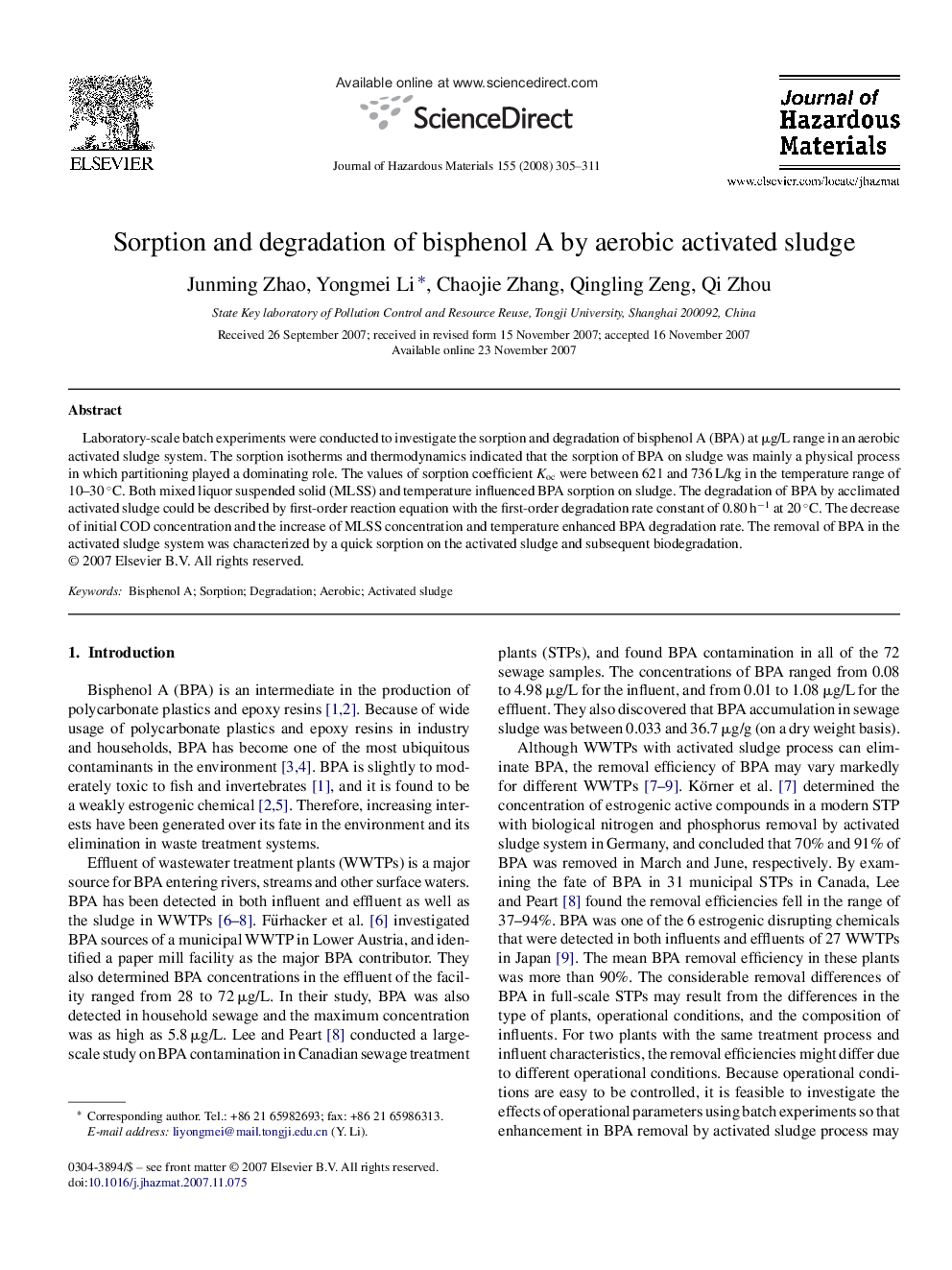| Article ID | Journal | Published Year | Pages | File Type |
|---|---|---|---|---|
| 583431 | Journal of Hazardous Materials | 2008 | 7 Pages |
Abstract
Laboratory-scale batch experiments were conducted to investigate the sorption and degradation of bisphenol A (BPA) at μg/L range in an aerobic activated sludge system. The sorption isotherms and thermodynamics indicated that the sorption of BPA on sludge was mainly a physical process in which partitioning played a dominating role. The values of sorption coefficient Koc were between 621 and 736 L/kg in the temperature range of 10-30 °C. Both mixed liquor suspended solid (MLSS) and temperature influenced BPA sorption on sludge. The degradation of BPA by acclimated activated sludge could be described by first-order reaction equation with the first-order degradation rate constant of 0.80 hâ1 at 20 °C. The decrease of initial COD concentration and the increase of MLSS concentration and temperature enhanced BPA degradation rate. The removal of BPA in the activated sludge system was characterized by a quick sorption on the activated sludge and subsequent biodegradation.
Related Topics
Physical Sciences and Engineering
Chemical Engineering
Chemical Health and Safety
Authors
Junming Zhao, Yongmei Li, Chaojie Zhang, Qingling Zeng, Qi Zhou,
